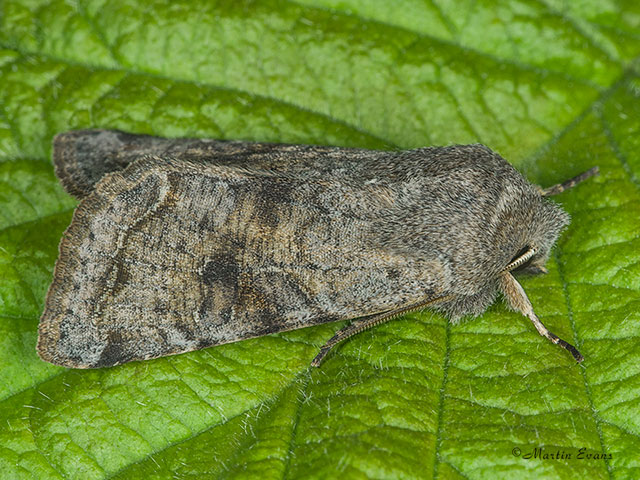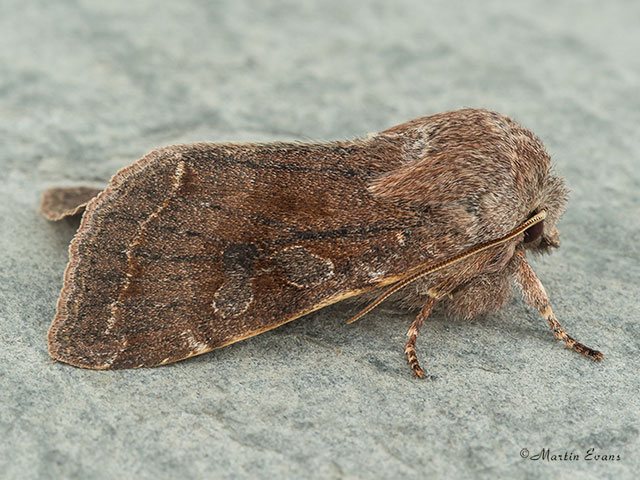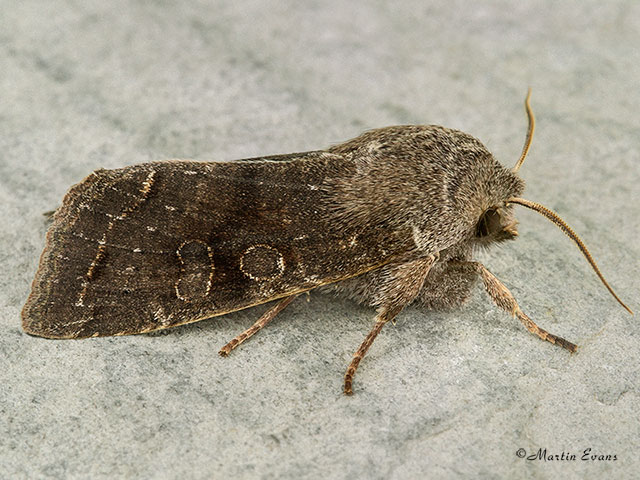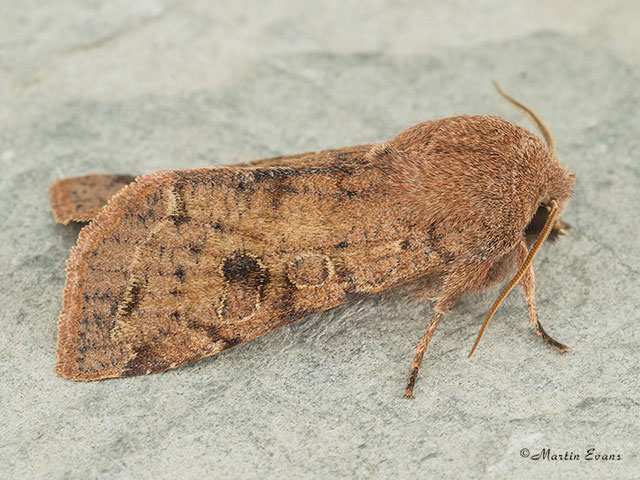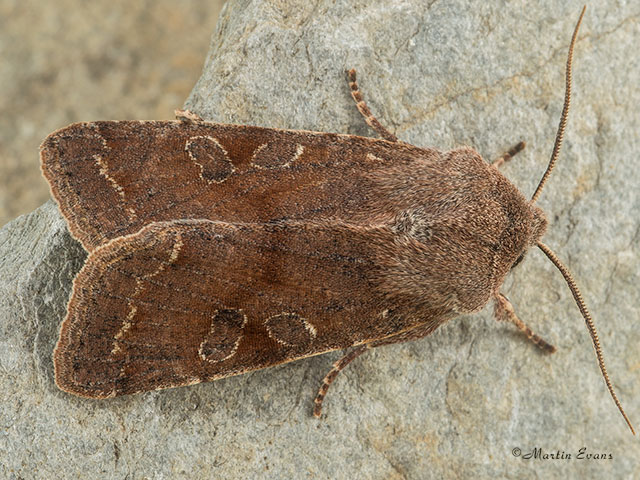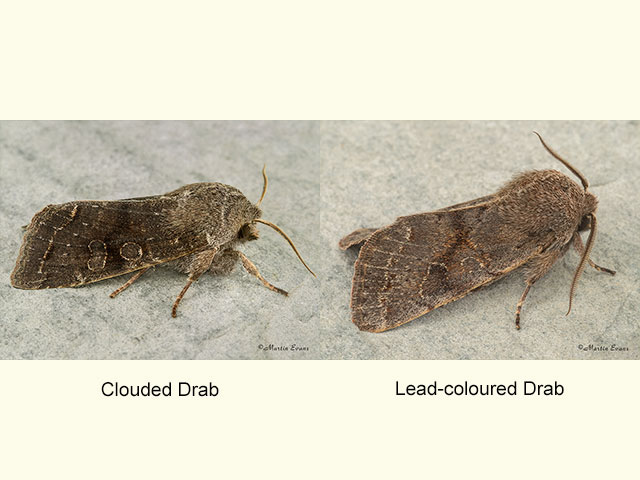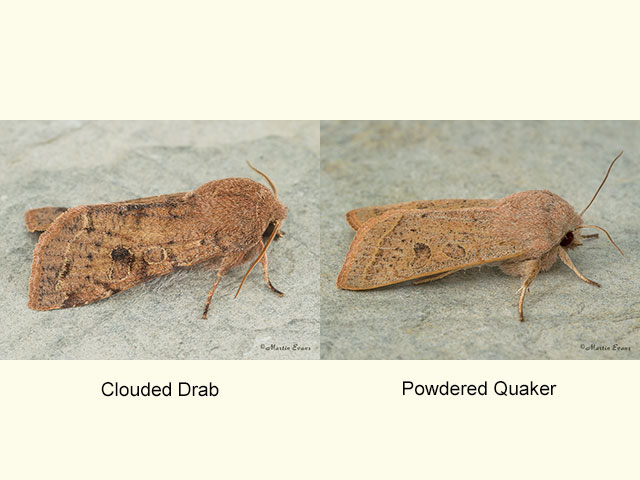Noctuidae
73.242 Clouded Drab Orthosia incerta (Hufnagel, 1766)
Common
Similar species: Lead-coloured Drab Orthosia populeti has more rounded wing-tips and the males have noticeably more feathered antennae. Northern Drab Orthosia opima has a dark central bar across the more angular forewing, a straight leading edge to the wing and more pointed wing-tips. Powdered Quaker Orthosia gracilis is paler without the clouded markings and has an almost straight outer cross-line.
Forewing: 16 to 20mm
Habitats: Deciduous woodland, scrub, carr, parkland and gardens.
Habits: The moth nectars at Blackthorn flowers and sallow catkins. It comes to sugar and light.
Foodplant: The small larva feeds in developing buds, then later in the spun shoots and leaves, of mainly oaks and sallows, but also Downy Birch, Silver Birch, elms, Sweet Chestnut, Hawthorn, Blackthorn, Hazel, limes and other deciduous trees. When full grown it rests under a leaf. It pupates in a cocoon under the soil, resting inside the pupal case as a fully formed adult until the spring.
On the European mainland it has also been recorded feeding on poplars, Beech, Bilberry and Bog Bilberry.
